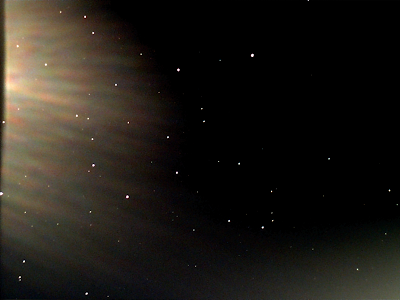You probably already know this but Jupiter has a lot of moons. At last count there are 80 of them.
 |
| The orbits of Jupiter's moons shown in SkySafari Pro |
Four of the 80 are big, famous and easily seen in just about any telescope. Galileo saw them back in 1610 and they are often referred to as the Galilean Moons.
 |
| From left to right: Europa, Jupiter, Callisto, Io and Ganymede. |
Those four moons of Jupiter are often viewed by amateur astronomers, but what about the others? Can they be seen? As it turns out, yes they can. They are small, faint and difficult targets because they are also located somewhat close to the glare of Jupiter.
The largest of Jupiter's moons that isn't one of the famous four Galilean ones is Himalia. Himalia has never been seen from close range by spacecraft, but it is thought to be possibly over 100 miles across.
 |
| Himalia's orbit is located far outside the orbits of the Galilean Moons |
Himalia is so far from Jupiter that it takes about 250 days for it to complete an orbit. Compare that to Earth's Moon which takes 27 1/3 days or Jupiter's Moon Io which circles Jupiter in just 42 hours.
While Himalia is far from Jupiter it is still a difficult target to see. The best time to catch Himalia is when Jupiter is closest to Earth. This means that Himalia will be somewhat brighter and there will be a larger apparent gap between it and Jupiter.
I took a look for Himalia about a week after Jupiter's most recent closest approach and found two things. 1) SkySafari, which is an otherwise excellent app, doesn't accurately plot Himalia's position. That's okay, there are other ways to get accurate coordinates for a planetary moon. 2) The glare from Jupiter is excessive. Take a look:
That's an image from August 27th taken with my Unistellar eVscope. Himalia is easily bright enough to be seen with the telescope, but the glow of Jupiter complicates things. When I took a close look at the image I found one star-like object that wasn't where a star should be. To make sure I had the right thing I needed to look again to see if it moved. Himalia's distant orbit around Jupiter means that it is moving pretty slowly through space, but Jupiter itself is moving around the Sun, as is Earth, and means that looking again the next night would place the moon in a different location against the background of the sky.
Here's my image on August 28th:
The glare from Jupiter is different, but I do have overlapping stars. To see if I caught Himalia I just needed to align and blink the images. Here is the result:
Can you spot it? Yeah, it's difficult. Look on the leftmost third of the image, or, better yet just look below where I cropped and zoomed the images and circled Himalia:
I checked its relative location and relative brightness and I'm confident that I actually bagged it, but I confess that it was trickier than I thought it would be.
I'll give this a shot next year when Jupiter again is in the proper position to find Himalia.




No comments:
Post a Comment